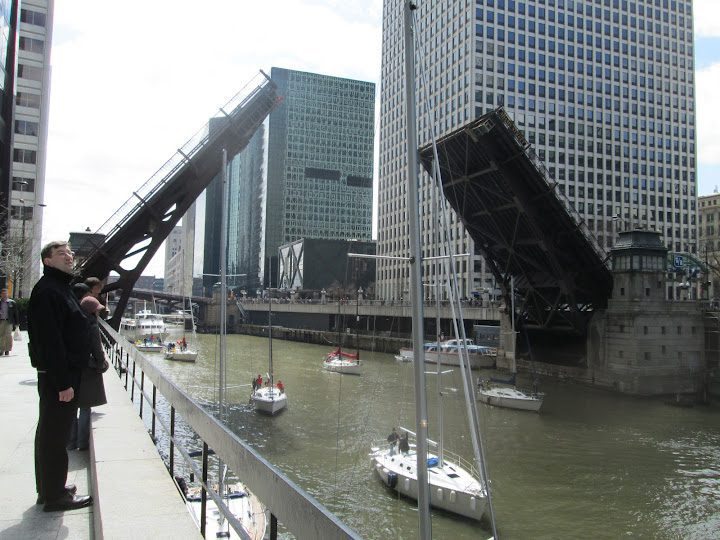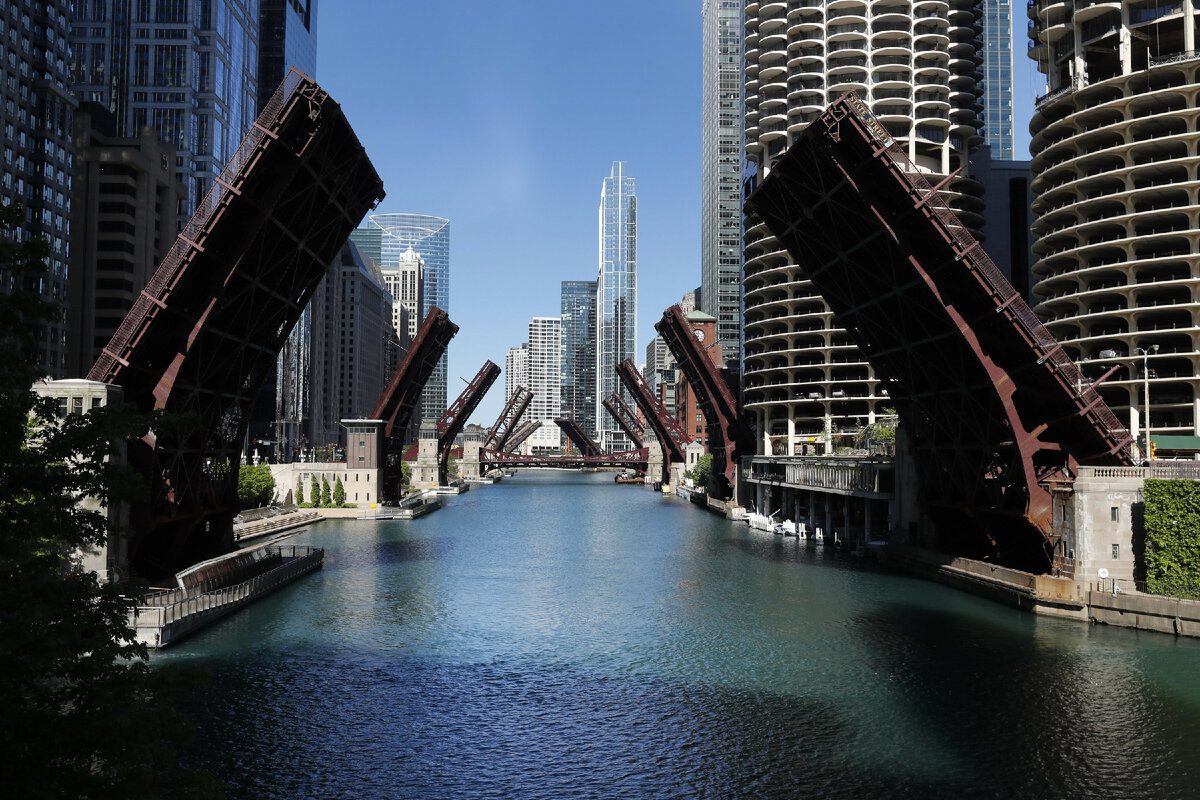Did you know a very interesting fact about Chicago? It turns out that the very first skyscrapers in the world appeared in this city. In addition, Chicago became home to a large number of drawbridges. There are 38 of them in the modern city, as reported by chicago-future.com.
The first bridges in Chicago

The geography of Chicago posed unusual demands. People often had to cross a narrow river with flat shores that ran through the city center. Additionally, the navigable river was one of the largest ports in the world, and low bridges were meant to provide free, frequent passage for vessels.
Initially, a ferry was a good option, but by 1833, the wooden bridge significantly impeded crossing to the West Side. Understanding the gravity of the situation, the authorities decided to build drawbridges.
The first movable bridge in Chicago was built in 1834 on Dearborn Street. It was made of wood and lifted using large chains. However, the bridge was demolished in 1839 because its approaches hindered the passage of ships.
In 1840, a new floating bridge was built, followed by 3 more bridges.
A flood in 1849 destroyed several floating bridges in the city. The movable bridges were too narrow and incapable of withstanding the large influx of people in the rapidly growing city.
An upgraded drawbridge was built in 1856 on Rush Street, but it was still too narrow. The movable bridges were arranged like a pinwheel in a board game. As a result, ships often collided with them.
In 1863, the bridge on Rush Street collapsed because a herd of cattle was driving across it. This proved once again that the bridges were unstable and impractical. In 1857, the first municipally financed bridge was opened in Chicago.
Until 1871, the city had 27 floating bridges, most of which were drawbridges.
In the middle of 1894, a new Scherzer rolling lift bridge and a vertical lift bridge appeared in the city. The vertical lift bridge was lifted and lowered through a counterbalance between two tall towers situated on both sides of it. Large counterweights above the road level helped balance the rocking chair-shaped Scherzer lift bridge during opening and closing.
Eventually, the trunnion bridges became a hallmark of Chicago, some of which still exist. The first such bridge opened in 1902 over the North Branch of the Chicago River on Cortland Street. The leaves of this bridge are suspended on axles. The riverbank pit houses huge concrete counterweights. This design proved to be efficient in operation, as it enabled the installation of trusses at the railing height and then moved them under the roadbed.
It is worth noting that the population of Chicago was about 4,000 people when the first drawbridge was designed in 1830. By 1857, the population had reached 90,000 people. The authorities kept looking for an alternative way that would facilitate the passage of ships and people. It was concluded that lift bridges were the most practical solution.
A great legacy

After 1910, the Chicago Plan Commission and architect Edward Bennett contributed to the improvement of the architectural elements of the bridges. Some of the bridges that function today are double-decked. The bottom level is used for vehicles and the upper level is for trains.
All the bridges in downtown Chicago are raised at the beginning and end of the boating season so that people can take their high-masted boats out onto the lake. Motorists and pedestrians usually stop and watch the incredible spectacle of bridge lifting in the city center. The bridge-lift season in the city lasts from April to June. The bridges are raised twice a week, every Wednesday and Saturday.
However, the bridge opening was a much more frequent event in the past. In the 19th and early 20th centuries, bridges were raised each time a boat needed to pass by.


